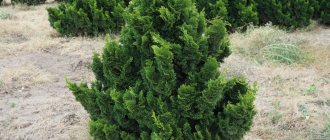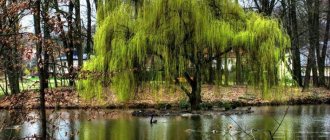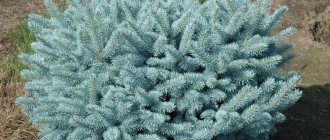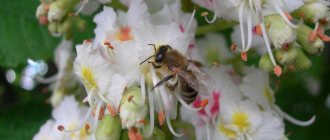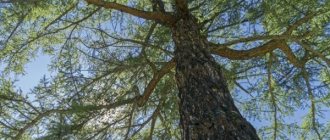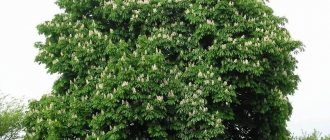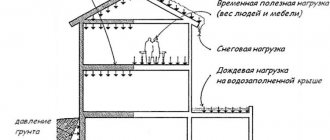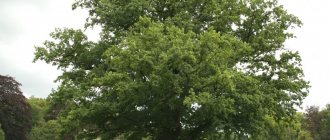Among the numerous Birch family, trees from the Hornbeam genus occupy a significant place. Representatives of the species inhabit the deciduous forests of the temperate zone of different continents of the Northern Hemisphere. About 30 species can be found in mixed and single plantings of flatlands and foothills. All of them are decorative and are used in landscaping public forested areas and private areas. One of the representatives is the Western European species Hornbeam - a graceful tree with a thin, even trunk and a chic, round, dense crown.
Botanical description of the species and growing conditions
The distribution area of this species is extensive; in the wild, the hornbeam tree grows in the mild climate of central Europe from Western and Eastern Europe to the Mediterranean Sea, in the Caucasus and Asia Minor on loose calcareous and moderately moist soils in the company of deciduous trees, however, there are also its own tracts. It loves light and warmth, at the same time it is shade-tolerant and frost-resistant; winter hardiness increases with age - it can withstand down to -25°.
European hornbeam is a long-lived deciduous tree, the average age is 200 years, grows from 7 to 12 m. However, some specimens sometimes live up to 300 years and rise up to 25 m.
The crown is lush, dense, and with its sufficient volume, reaching 8 m, the diameter of the trunk reaches a maximum of 40 cm, giving the plant windage and visual fragility. Although the root system of hornbeams is superficial, it is powerful and widespread, with deeper lateral “anchor roots”, which makes the tree wind-resistant.
The bark of the trunk is light gray, silvery, smooth in youth, then becomes ribbed, gradually becomes covered with small cracks, and deeply cracks with age.
Hornbeam leaves are large, alternate, up to 15 cm long, not wide 5 cm, petiolate, oval-pointed, with a jagged edge. The upper side of the leaf blade is smooth, the lower side has pronounced light veins and is pubescent. In summer the foliage is dark green, in autumn it changes color to yellow and crimson.
It begins to bloom at the end of April or at the beginning of May, simultaneously with the opening of the buds, lasting 8–12 days. The plant is monoecious and pollinated by wind. There are two types of earrings:
- staminate - loose, small up to 5-6 cm and 1 cm thick, with 5-7 stamens whose anthers are pubescent. They are covered with yellowish pointed scales, reddish-brown and ciliated along the edges;
- pistillate - up to 15 cm long, with three-lobed leathery fruit wrappers, 3–6 cm long, entire or serrated.
The fruit is a small, flattened, ribbed brown nut, 3–6 mm. One earring can contain up to 30 pieces. Fruiting in September–October.
The crown is made up of thin, long flexible branches. In the spring they are brown at the edges, hang down like a willow, and in the summer they straighten out. They tolerate pruning easily and can be given any shape.
There are also decorative varieties that reflect the shape of the crown, leaf blade and leaf color:
- hornbeam pyramidal, weeping, columnar;
- cut - with dissected narrow leaves;
- oakleaf – leaf blades are small, deeply lobed with wide teeth;
- purple - brown ones bloom immediately, then change color to normal green;
- variegated - there are several shades.
These picturesque features of the hornbeam and its ability to form are widely used by designers and used as ornamental trees.
Which plant to choose for a hornbeam hedge
Fig tree: what is it?
Why did Jesus curse the fig tree? You can get high-quality results by choosing the right green space
It is important that the natural conditions are as suitable as possible. This way the planting can develop correctly and grow to its full potential.
A healthy planting can be formed and is easy to care for, maintaining its proper appearance. A hedge is formed by a variety of plants; common hornbeam is often used. The tree is characterized by relatively slow growth. In adulthood, the height can reach 25 meters. Suitable for shaded areas, it tolerates direct sunlight extremely poorly. The decorative value of the planting lies in its attractive smooth bark and compact crown. The foliage is characterized by a dark green color, oval shape, and corrugated plate texture. Adding to the attractiveness are the earrings that appear during the flowering period. Slow growth is an undeniable advantage, since it retains its given shape for a long time. With its help, medium-sized walls, hedges, and borders are formed.
Decorative forms of common hornbeam
The common hornbeam has interesting decorative forms, differing in the shape of the crown, leaves, and their color. The crown shape can be narrow pyramidal (f. fastigiata), columnar (f. columnaris), or weeping (f. pendula). Leaves that are narrower than the typical form and have deep lobes are f. incisa, small deep-lobed leaves of the oak-leaved form (f. quercifolia). There are forms with unusual leaf colors - purple (f. purpurea) with purple young leaves that turn green over time, and variegated (f. variegata).
Eastern, or black, or hornbeam (Carpinus orientalis) - grows in the Crimea, the Caucasus, the Balkans, and is found in Asia Minor. Prefers sunny slopes, grows on dry rocky soils, and often forms thickets. This is a deciduous tree, about 7 m high, with a dense ovoid crown, oval, pointed dark green leaves up to 5 cm long. In autumn, the leaves turn lemon-yellow tones. In Ukraine, it is winter-hardy, suitable for small areas, used for hedges, and tolerates heavy pruning.
All types of hornbeam are quite decorative; in addition to those mentioned above, heartleaf hornbeam (Carpinus cordata), which grows naturally in the Primorsky Territory, China and Japan, is also used in landscaping. This beautiful tree with a spreading crown and delicate light green foliage can be found in parks and squares. Among the North American species, we can also find Carolina hornbeam (Carpinus caroliniana). This species is characterized as insufficiently winter-hardy, but in the conditions of Ukraine it grows normally.
Fences in the form of walls
The hedge can be planted in the form of an arch, which will rise above the gate.
A hedge in the form of a wall is a fence with a height of two meters. This form is used to create beautiful and reliable fencing for large areas of residential buildings and parks. The best option in this case is the common hornbeam, which has a suitable height, and its unusual crowns allow you to create real green continuous walls around the site.
This plant is unpretentious, can grow well in the shade, protects from noise and dust, wind, and refreshes the air. Such hedges are planted in a fairly dense row; often there is not even one, but two or three rows, which create a dense, reliable barrier from prying eyes. Caring for such a hedge is quite simple. If a hornbeam is used to create a green fence, then it does not need frequent shaping.
This is interesting: How to build a foundation for a barn - we consider it in detail
Choosing a place and proper landing
According to many experienced experts, hornbeam is a moderately demanding plant, but dense acidic and saline soils, as well as lowlands and close groundwater, do not contribute to its decorative value. Fresh, nutritious, calcareous soil with moderate moisture is preferable, but it can grow even on rocky and dry soil, as long as the soil is loose and alkaline (pH 6.5–8).
The best time for planting is autumn, 2-3 weeks before frost, so that the tree has time to take root, but it is also possible at any other time of the year, but it will take longer for the seedling to take root. It is advisable to plant two-year-old plants. Choose a bright, spacious location; the area may be shaded.
Prepare the planting hole in advance. The dimensions should be twice the size of the seedling's earthen ball, usually 50x50 cm is enough. To fill the hole, garden soil is mixed with humus, fallen leaves are added, the soil should be loose. If the soil is acidic, add one of the suggested remedies:
- 0.5 kg of dolomite flour;
- 300 g chalk;
- 1 kg of wood ash;
- calcium nitrate (calcium nitrate (according to instructions).
After mixing the components, fill the hole, pour in 10 liters of water and leave the soil to settle.
Do not use other fertilizers together with deoxidizing components; they react with each other and can burn the roots of the tree. It will be more useful to feed the plant after 3-6 months.
After several days, the culture is planted in the hole. Roots that are too long can be trimmed, as long as there is a sufficient number of suction roots. Once again, shed a large volume of water and mulch the soil around the tree trunk to retain moisture. When frost approaches, it is better to insulate the tree. Cover the tree trunk circle with dry leaves, sawdust or peat and cover it with spunbond, building a wooden frame over the seedling.
The crop grows slowly for the first 10 years, then the growth rate increases and amounts to an annual increase of 20–25 cm in height and 4 mm in diameter. Then, at 35–40 years old, growth slows down, and at 90–100 years it stops altogether.
Planting a hedge - step by step:
Hornbeam seedlings with an open root system (with bare roots) are planted in open ground in the fall (preferably) or spring. Seedlings with a closed root system (with a formed root ball, sold in containers) can be planted throughout the growing season. It is advisable to plant trees during the leafless period.
Hornbeam for fencing is planted densely, every 30-50 cm in a row and at a distance of at least 50 cm from the fence. It grows very slowly until 4-5 years of age, then growth accelerates slightly. The seedlings are placed in holes, covered with soil, and watered well.
Planting a hornbeam hedge:
- We mark the fence line. Let's start by laying out, for example, a garden hose or rope. After walking back and forth a few times, you need to make sure that the fence line looks exactly the way you want it to. If the hedge is to be planted in a straight line, you can immediately line it with rope.
- We remove the turf. Leaving the soil in place, dig up the top layer on both sides at approximately the same distance. We pull out the turf, remove it, and you can even out the edges with a shovel.
- We prepare the ground. We take a pitchfork or shovel and dig the ground. We select large stones, weeds, and insect larvae overwintering in the soil. Add some fertile soil to the dug up soil. You can add compost - several bags. When the level is leveled, we dig up the ground again with a pitchfork and mix the garden soil with fertile soil. A good dose of compost will give the seedlings the best start.
- If there is a straight line, mark it with a rope. You should also immediately decide on which side of the rope we will plant the seedlings; for convenience, you can move the string 2 cm relative to the axis of the strip of dug up earth.
- Soaking seedlings. We lower the plants into water. For relatively recently dug seedlings, 2 hours of soaking is sufficient. You can leave purchased seedlings in water for several hours.
- Trim the roots. In most cases the roots are too long. Sometimes seedlings are sold with their roots already cut. From the photo below you can see that part of the roots of this seedling was cut off last season - you can see the shortened tap root, and new young roots grew from it. When pruning, remember that the smallest roots are the most valuable; we shorten them as much as necessary. We cut the rest in half - they should fit freely in the hole.
- Landing. Scoop out the soil and, holding the seedling with one hand, scoop up the soil with the other hand, then carefully scorch the soil and compact it.
The best method is planting with alternating watering. Place the plant in the hole, sprinkle with a little soil and water. The water will force the soil to cover each root, pushing air out from underneath the root ball. When the water is no longer visible (still holding the seedling), sprinkle with soil and water again. We repeat the action until the plant is covered with soil to the appropriate level, that is, the level at which it grew in the nursery. The level of the root collar is visible due to the different color of the bark.
- Water generously. It is better to immediately pour out a large amount of water so that it fills the entire tape.
- Pruning immediately after planting. Regardless of the height of the seedlings, the hornbeam hedge must be trimmed. Depending on the branching of the seedlings, cut them to a height of 20-40 cm above the ground.
It may seem that it is better to immediately buy smaller seedlings, which are cheaper, than to prune them later. According to experts, larger seedlings have a stronger root system and take root and grow more easily. The mistake novice gardeners make when creating a hornbeam hedge is to wait for the seedlings to grow. For hornbeam, you need to start pruning immediately after planting so that the hedge is compacted from the very base.
In the fall, moisture remains in the soil longer than in the spring, but you still need to check the soil around the plants and water if necessary. This is the most important thing in caring for young seedlings.
Nuances of caring for common hornbeam
Hornbeam is a mesophyte, which emphasizes its requirement for moisture, so the main care measures are aimed at maintaining moderate but constant soil moisture. Especially in hot and dry climates, watering should be plentiful; a lack of water will immediately affect the condition of the leaves. For hedges, a good solution would be to use drip irrigation.
The tree does not need additional feeding, since it itself improves the composition of the soil. In autumn, hornbeam leaves curl and fall off, forming a loose litter that rots by spring. A slightly acidic soil is formed, rich in soft humus, enriched with useful microelements, which is quite favorable for the successful growth of the plant.
A necessary condition for care is sanitary pruning. It is held in the spring. Sick, dry, frozen branches and young growth inside the planting, which interfere with the decorativeness and health of the plant, are removed.
Varieties
Depending on climatic conditions, different types of this plant grow in different parts of the planet. Let's look at each of them.
Common hornbeam
It is found quite often, mainly in Europe, which is why it is also called European hornbeam. It grows both in forests and in gardens and park areas. It reaches a height of approximately 20 meters, and the circumference of its crown is about 8 meters.
The common hornbeam prefers a mild climate and grows in sunny areas with moderate soil moisture. In the second half of spring, the tree blooms, becoming covered with beautiful earrings.
Eastern hornbeam
This species grows in Crimea, the Caucasus, southern and eastern Europe. A distinctive feature of the eastern hornbeam is its small height, only 6-10 meters.
The trunk is most often curved. The crown has an ovoid or round shape.
Blooms in mid-spring, and fruits appear in late June, early July
Important! Hornbeam categorically does not tolerate wetlands and acidic soils, so it should not be planted in such areas
Caucasian hornbeam
It is found in the northern part of Asia Minor and Iran, in the Crimea and the Caucasus.
Most often these are low trees up to 6 meters high, although there are cases when Caucasian species grew up to 18 meters, but this is an exceptional phenomenon that is extremely rare.
This species prefers mountain ranges and proximity to oaks, chestnuts and beeches.
Heart hornbeam
This deciduous tree grows in Japan, China, Korea and the Primorsky Territory of Russia. Plant height is from 10 to 20 meters.
The leaves resemble the shape of a heart, which is where the name of the species comes from.
Prefers mixed forests. Often grows at the foot of mountains.
Carolina hornbeam
North America is considered the homeland of this species, where the plant can be found along rivers and near swamps and lakes. The height ranges from 6 to 12 meters.
The plant is characterized by a ribbed trunk up to 30 cm in diameter and a bush-like spreading crown.
Refers to heat-loving plants that do not tolerate frost well.
Heat-loving plants also include salvia, vriesia, Forster's howea, rubber-bearing ficus, fuchsia, and butterwort.
Hornbeam Turchaninov
These small trees up to 6 meters in height grow in the mountain forests of China. They are rare plant species and are famous for their decorative properties.
It is distinguished by a luxurious crown of an ideal round shape and bright glossy leaves with serrations, the color palette of which changes throughout the growing season.
So, in the spring, young foliage is painted bronze, then becomes rich green, and in the fall it acquires a yellow-orange color interspersed with red.
Virginia hornbeam
Grows in the southeastern part of North America. It is considered a very whimsical, but at the same time incredibly decorative tree. It reaches a height of no more than 12 meters.
Did you know? All types of these trees are endowed with very strong energy, even, one might say, magical power. It is believed that if a person is very tired at work, cannot bring order to his thoughts and concentrate on his goal, he needs to plant such a plant, and everything in life will work out properly.
Tree propagation methods
The hornbeam is regenerating well. There are several methods of reproduction.
- Seeds. Due to the extremely abundant and frequent fruiting, there is no shortage of seeds. Hornbeam nuts can lie under a tree for up to 3 years without losing their germination. Usually in spring numerous young shoots appear, which can be used as seedlings. The germination rate of dry seeds is 50–70%. Before planting, they are treated with potassium permanganate or fungicides and stratified. First, seeds soaked in warm water are steamed at +25° for a month, then frozen at -10° and kept there for 3–4 months. Hardened seeds are warmed and planted in germination containers or directly into the ground.
- Vegetative methods are little used methods of propagation.
- layering: European hornbeam has the ability to produce spontaneous layering from dormant buds at the base of the trunk. New shoots can be obtained from such branches. To do this, it is necessary to bend the orthotropic shoot extending from the base of the trunk to the ground, secure it with a pin, and after a while a sprout appears at the point of contact with the ground;
- the growth that appears on the stumps of felled trees is also viable and takes root well. The most resilient growth is obtained from winter cutting of trunks. The sprouts that appear in the spring have time to become lignified and meet the frosts already strengthened.
Trees of seed origin are stronger, have good immunity, grow more slowly, but retain all the decorative qualities of the mother plant.
The shoots grow faster due to the maternal roots, but are also more susceptible to destruction by rot, penetrating from the same dying maternal roots.
Brief description of plant varieties
7 exotic trees that can be planted in central Russia
There are about 30 varieties, most of them grow in Asian countries, only 3 species are represented in Russia, and 2 species grow in Europe.
Common (European)
It grows on average up to 20 meters, with a spreading crown. Loves partial shade and sunny places. The crown is patterned and grows in the shape of an egg.
Cordifolia
It has a distinctive feature - light, translucent leaves, shaped like a heart. The height of hornbeams (large hornbeam thickets) is 12-20 meters. Places of growth: Korea, Japan, in the South and East of Primorsky Krai. The eastern species is found on mountain slopes. In places where the hornbeam tree grows, the soil is held together on dry rocky embankments in the mountains and is kept from sliding, moisture is conserved. The shape of the tree is twisted.
Caroline
Distributed in the states of North America. It is whimsical to natural conditions, loves warmth and shaded places. Not resistant to frost, chooses places most often near rivers, ponds and swamps. The crown shape is always bushy.
Caucasian
It grows under natural conditions in the Caucasus, Asia, and Crimea. This species is short, about 5 meters in height. Often forms thickets, especially in Transcaucasia. The best neighbors are: chestnut, beech, oak.
Virginia
It is a subspecies of the Carolina variety, but has even more pronounced decorative qualities and is often used in landscape designs. It grows slowly, the crown is bushy and can be given any desired shape: from square to round and curly. It is calm about pruning and replanting.
Variety Turchaninova
A low species, more often found in China, in mountainous areas. The species is decorative and beautiful, but is rare, which is why it is valued among lovers of this plant. Foliage color changes constantly throughout its life cycle.
Diseases and pests
The hornbeam genus is practically not damaged by parasitic insects and fungal diseases, only if the vitality of the tree is not weakened. Prolonged heat and drought can undermine the plant's immunity.
Possible diseases caused by fungal spores: various trunk rots, cancer, deformation and drying of branches. Diseases can be prevented by preventative spraying of trees with fungicides and seed treatment before sowing.
Insects that can harm hornbeam include leaf-eating caterpillars of the beech weevil, birch tubeweeper and silkworm. Trunk pests include sapwood beetles, tree beetles, and chestnut beetle. Their damage is so minor that it does not pose a threat to the life of the tree. And yet, preventive spraying with insecticides will not hurt.
Where does the hornbeam grow?
In nature, there are more than fifty varieties of hornbeam. This tree is widespread on the northern continents.
European hornbeam is the most numerous species, the wood of which is among the most valuable. It can be found in the Caucasus, Europe and Asia. Some varieties grow in Iran, North America, the Balkans and southern Russia. They can also be found in Transcaucasia, Belarus and Ukraine. Hornbeam is quite widespread in the Baltic countries. At the same time, the bush-shaped hornbeam can be found in the nature of China, Japan and Korea.
This tree prefers to grow in soil where water does not stagnate. Most suitable for him:
- forest edges;
- middle and lower parts of the mountains;
- well-lit sides of the slopes;
- rocky soil.
Hornbeam feels best on moist and nutritious soil. In this case, the plant dies in acidic soil and in a swampy area. Sunny, arid areas with soil containing a large amount of lime are more suitable for it.
The tree is highly resistant to pests, and it does not suffer when the air temperature drops (but not less than 15 degrees). After a long dry period, a sapwood beetle may take up residence on a tree. If moisture stagnates in the soil, this can cause rot. And in an excessively hot and dry climate, the top of the tree may dry out. In North America, hornbeam prefers to grow on river slopes, while in appearance it looks more like a shrub.
Useful properties and applications
The Common Hornbeam is valued for the strength of its wood and the beneficial chemical composition of its vegetative parts, which are used for medicinal purposes by folk healers. Decorative trees with amazing shapes are successfully used in landscape design.
The cross-section of the wood is very aesthetic; its shiny white or light gray surface has sinuous, inconspicuous growth rings that form a bizarre pattern. The extraordinary strength and hardness combined with the picturesque nature of the rock has found application:
- in the manufacture of designer furniture;
- household items such as cutting boards, ax handles, shovels and knitting needles;
- in mechanical engineering and agriculture for the manufacture of machine parts;
- in construction, where strong elements are needed in dry places, for example, scaffolding, sheathing pits and other objects;
- sports equipment such as a billiard cue and a golf club;
- musical instruments: piano keys, guitar and other elements;
- accessories and decorations.
All parts are strong and durable to use.
Hornbeam firewood does not produce smoke when burned, so it is used in wood-burning pottery workshops and bakeries. From them, along with beech plants, acetic acid, methyl alcohol, solvent, and resins are obtained.
The bark is used to obtain a natural yellow dye for wool and leather tanning. The leaves are used in the tanning industry to obtain tanning extract.
Oil is obtained from hornbeam nuts.
Flowers are used in folk recipes to cleanse blood vessels and for brain tumors; an infusion of leaves has antibacterial properties and stops diarrhea.
Description of the hornbeam tree
The plant has 60 varieties. It grows mainly in Europe, Canada and America.
And varieties of the family, for example: Carolina hornbeam, live in China, Iran and Japan. Not all hornbeam trees bear fruit.
The common hornbeam grows in Russia; it is also called Caucasian hornbeam.
- The trunks reach a thickness of forty centimeters, the trunk has a silver-gray color.
- Its bark is covered with small crevices, although it is smooth to the touch.
- The shoots are very flexible and almost never grow straight.
- The crown is ovoid and very dense.
- The leaves are long and bright green in color, with a serrated edge.
Flowering and fruiting
Before the leaves bloom, the plant produces long brown catkins. In a female tree they can be fifteen centimeters long, and in a male tree six.
In autumn it becomes especially beautiful due to the leaves that acquire a bright yellow, pink or orange-red color.
The hornbeam bears fruit with small nuts of a dark brown color; they ripen in late autumn. The roots are quite strong and located on the surface.
A hornbeam tree grows slowly but for a long time; its lifespan can range from one hundred fifty to two hundred years.
The crown retains its shape for a very long time after trimming; it is often used for decorative decoration of parks and squares.
This type suppresses city noise well and cleans the air of pollution.
Interesting. The tree can be given different shapes, and in the Far East, Japanese hornbeam is used for decoration.
In any forest, hornbeam behaves comfortably next to coniferous trees.
The hornbeam is considered the tree of realists; it is designed to dispel illusions and return dreamers from heaven to earth. But it gives part of its power to workaholics, helps them fully reveal their abilities and talents, and achieve the desired results and success in life. But the hornbeam really has strength; it was not for nothing that in ancient times in European countries it was classified as a member of the Oak family.
Decorations made from light hornbeam wood eliminate stupid prejudices and superstitions, force you to look at problems that seem mystical from a realistic point of view and take concrete actions to solve them.
In addition, light jewelry has a calming effect, helping you relax, tune into a peaceful mood, and forget about the hustle and bustle and minor problems.
A decoration or rosary made of white hornbeam is a good gift for those who have experienced difficult life situations, been in a state of stress or depression, because white has always been the color of peace, purity, sincerity and nobility.
Use in landscape design
In landscaping, the European hornbeam looks great when creating numerous decorative options for parks, recreation areas and personal plots.
Any decorative form is acceptable as a tapeworm, for example, the hornbeam variety Fastigiata, which has a cone-shaped appearance, and typical trees look good on lawns.
Extraordinary pliability in cutting and slow growth allow you to build amazing masterpieces in topiary, create stylish arches, hedges and other “sculptures”, embodying creative landscaping solutions.
attuale.ru
What is bog hornbeam?
Bog hornbeam
Rich black color imitates the texture of ebony, which is one of the most valuable types of wood growing in Africa.
Hornbeam
is a genus of monoecious deciduous trees and has the highest density among the species growing in Russia.
Interesting materials:
What are Ciprolet tablets used for? What are gear oils used for? What is the Duofiber brush suitable for? What is a shower good for? What is chicory good for? What is zinc ointment useful for? What is bear meat good for? What is the port for? What is the GTO complex intended for? What is the purpose of the reverse lever on a sewing machine?
Kinds
Hornbeam is a common plant, and there are a large number of its varieties:
- European, or common, which is found throughout mainland Europe. A tall plant with a natural ovoid crown shape.
- Cordifolia, or seaside - its feature can be called transparent leaves, ideal for gardens and parks. Such a hornbeam is able to provide a sufficient amount of shade without depriving shrubs and other plants in the lower part of sunlight.
- Carolina, or North American - this plant does not like shade and low temperatures and requires a large amount of moisture. Therefore, it grows exclusively on the banks of reservoirs. And it does not reach large sizes.
- Virginsky, which is preferred by designers and decorators for its unusual crown.
- Caucasian hornbeam, which has a unique curved trunk and the ability to protect the soil from washing out and subsidence processes. Usually grows on mountain slopes.
- Black, or decorative hornbeam, native to Asia (Japan), suitable for decorating exotic bonsai.
Variety Turchaninova
A low species, more often found in China, in mountainous areas. The species is decorative and beautiful, but is rare, which is why it is valued among lovers of this plant. Foliage color changes constantly throughout its life cycle.
READ What is cypress?
Characteristics of different types of wood The wood I worked with
| Page 1 | Page 2 |
|
This is a very important moment, since the quality of your product depends on the choice of wood.
If you want to make suburi bokken, you need heavy wood. If you plan to use a sword for kumitachi (working in pairs), then you will also need a very dense tree that can withstand blows.
The same applies to jo.
Below I will give small characteristics of the types of wood with which I have worked. If possible, I will give their pros and cons.
Cayenne tree (or amaranth)
Scientists cannot decide whether this is a separate species of tree or whether it is part of the redwood tree.
The surface of the tree has a dark gray color, but then it gradually changes and turns into brownish-lilac or wine-red. For me it took on a Murasaki color. I must say - a very, very beautiful color!!!
The tree is hardwood and polishes well.
My conclusions
Excellent material!!! I made it into a suburi bokken weighing almost 1 kg. and at the same time it has the shape of a regular bokken. You can use it to fight (the wood holds a blow perfectly), practice yai (since the suburi bokken in my design do not have a blade that is two or three times larger than in the store) and suburi. The only thing I noticed was that the wood was warping a little.
Red beech
In some cases, it is not much inferior in strength to oak, but nevertheless it is susceptible to wormholes and warps greatly.
To prevent worm attacks, the finished product is smoked or steamed. (On the advice of the master, I impregnated it with wax). To make the tree warp less in the future, it is cut down in the middle of summer, and then, after a year, it is sawn into boards, which are placed in water and kept in it for several months.
The color of the wood is reddish-brown, with many large and darker sparkles; With age, the color darkens and turns almost brown. When steamed, beech bends into the most bizarre shapes and, after drying (in a fixed position), retains them for a very long time.
Growing
The hornbeam tree loves moist, loose soil with a significant admixture of lime, but cannot tolerate stagnant water. They tolerate precipitation and windy weather well, but still prefer sunny weather.
A tree growing in urban conditions tolerates winter climate well, but requires additional irrigation in summer. This type of plant grows well next to any trees.
Hornbeam in folk medicine
Traditional healers use leaves, bark and flowers of hornbeam. The leaves contain a lot of aldehydes, tannins, gallic acid, coumarins, caffeic acids, bioflavonoids. The bark contains a lot of ascorbic acid and essential oils. The seeds contain vegetable fats. The juice from young shoots contains organic acids and sugars.
These unique substances effectively act against a number of diseases - brain tumors, circulatory disorders in the brain, female infertility, diarrhea. Hornbeam shoots are included in herbal preparations that are used when there is a threat of miscarriage.
Official medicine does not use parts of this tree to prepare medicines, so their chemical composition is poorly understood. Therefore, the medicinal raw materials of this tree must be used with great caution, starting with small doses, and avoiding overdose.
Application of hornbeam in low-rise construction
Hornbeam is being used more and more often in low-rise construction, and experts value it for its ease of staining and painting. True, this type of wood also has some peculiarities, one of which is that this type of wood is subject to rapid rotting processes, so products made from hornbeam will need to be provided with special protection, for example, finishing a house with siding is appropriate. In addition, another feature of hornbeam is that such wood material is quite difficult to polish and process with any cutting tools.
Hornbeam is very often used to make “living” hedges on private plots, and some types of this tree species grow and turn into real impenetrable thickets, through which it is impossible to pass or climb
This type of wood is used for the manufacture of products in which it is necessary to ensure resistance to impact loads or any physical influences, viscosity at the required level, as well as hardness.
Ash
Is its wood not particularly beautiful, yellowish in color with lighter and darker stripes? if the finishing is not thorough, the annual layers protrude strongly outward with a lot of pores clogged during grinding and polishing (this is what made me refuse to use it).
It is quite hard, dense and heavy, and most importantly elastic; when dry, it is quite durable, especially if dried over steam. In its raw form, it is easily wormed and is very sensitive to atmospheric changes.
My conclusions
I didn't like working with him. Mostly I made tanto out of it.

